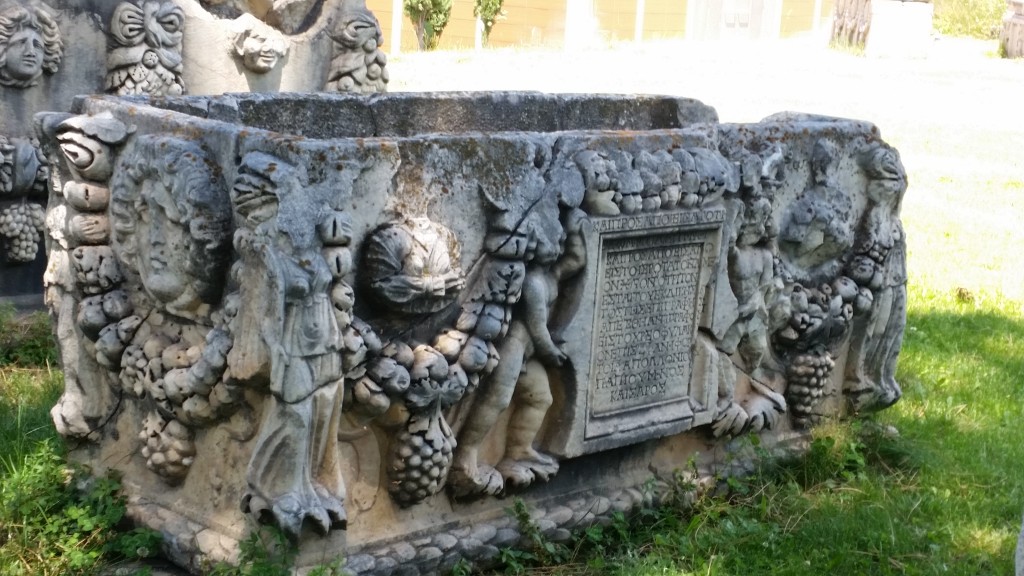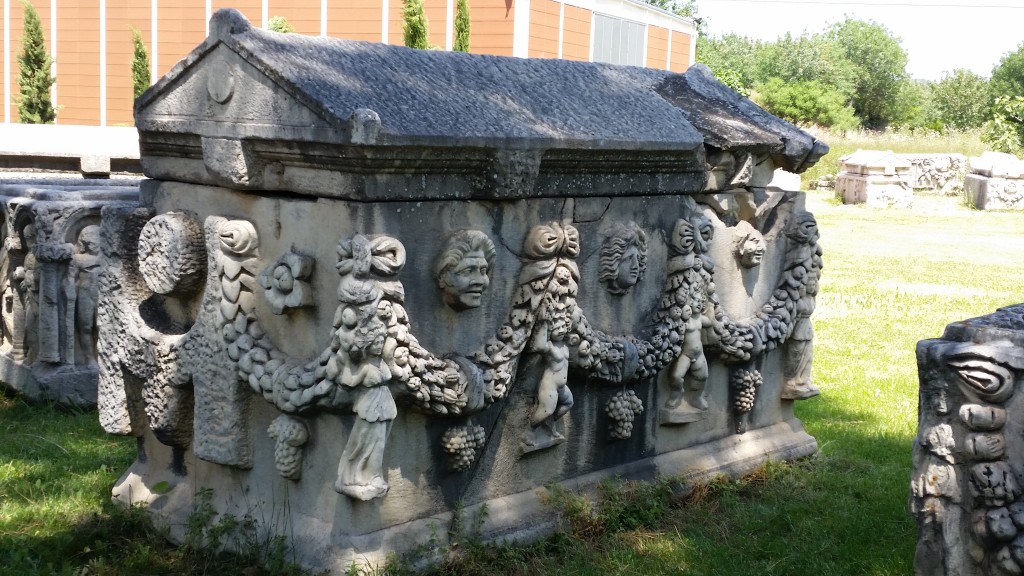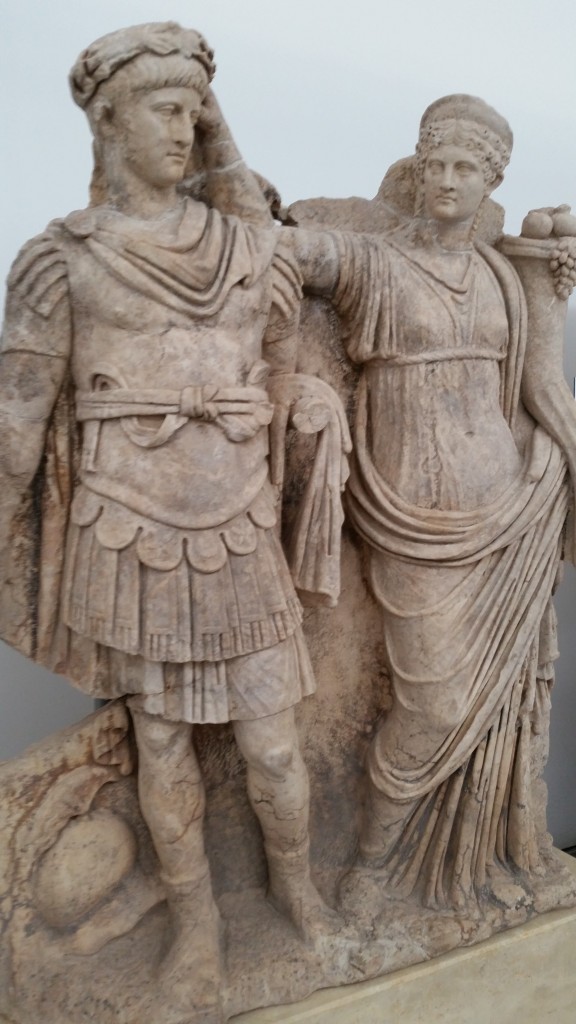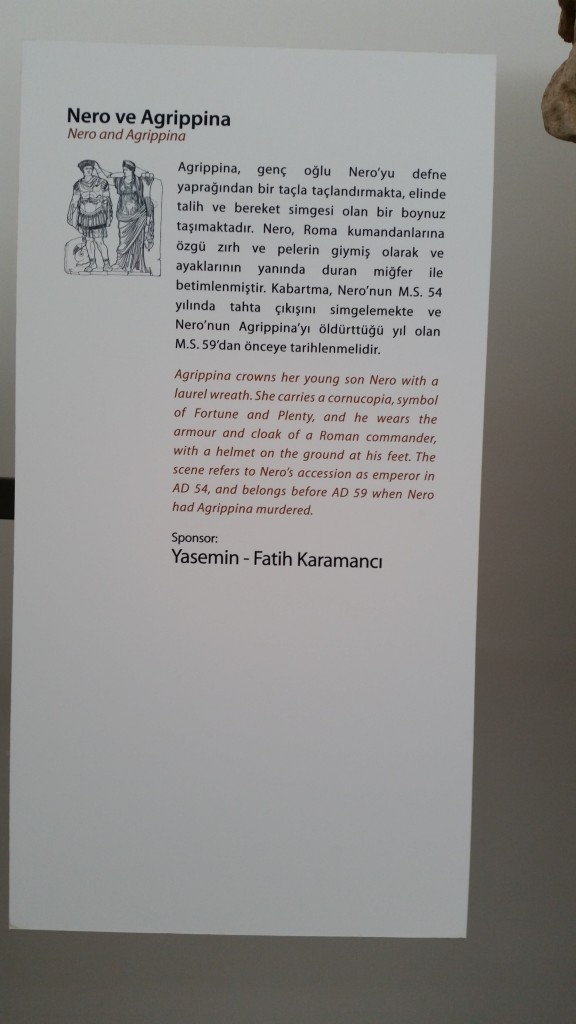A trip to Aphrodisias is always a treat as it is a truly spectacular site, and now it sports the best museum related to the growth of the Imperial Cult in the first two centuries. In order to understand the relevance of this to NT studies one needs to recognize only two recent historical persons were being called God in the first or second century, either the Emperor or Jesus. There is then a case to be made that these two figures were the basis of two rather new religions, competing ones. I don’t want to over cook this idea, but it does seem to help us understand some books of the NT, for example Revelation and passages like 2 Thess. 2.
Man or woman however cannot live by archaeology alone, so let’s have some lunch first at Ahmed’s famous restaurant complete with parrots, traditional Turkish food, and traditional turkish music played on the saz.
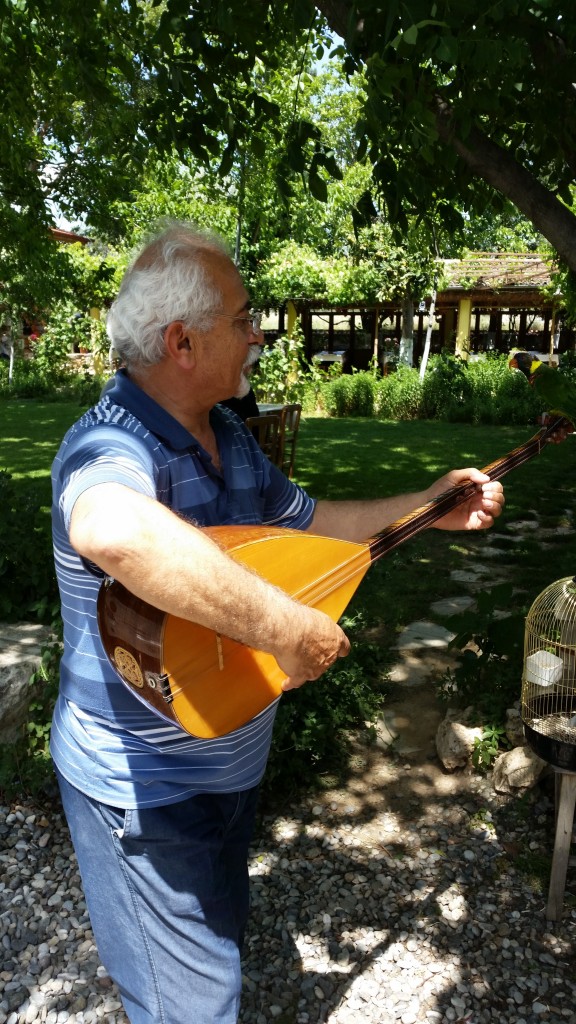
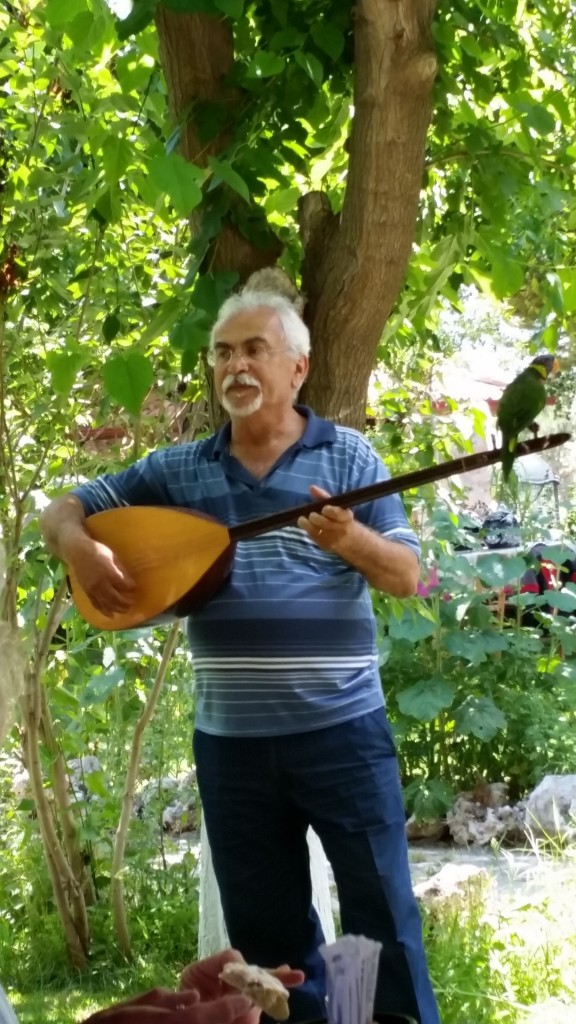
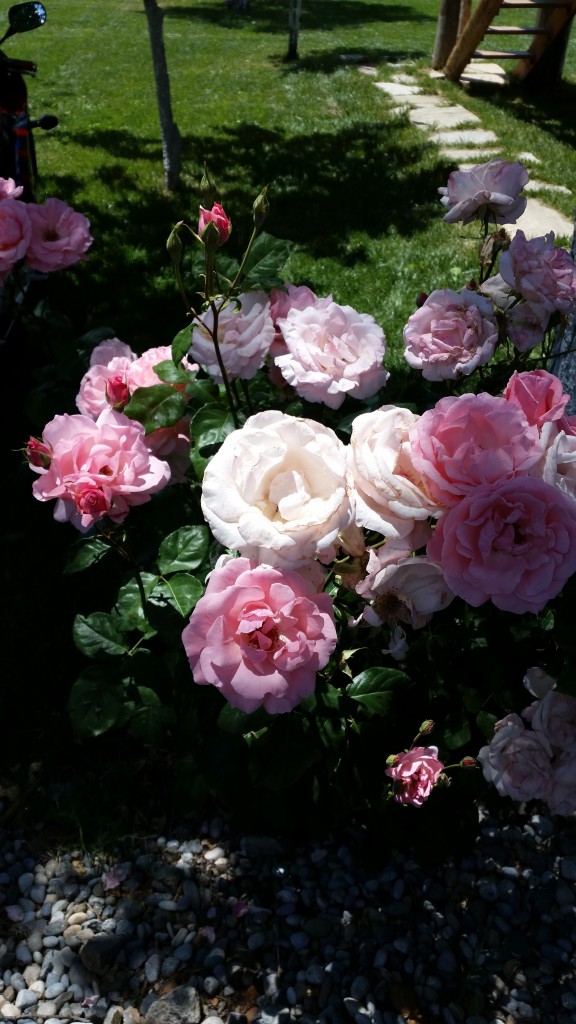
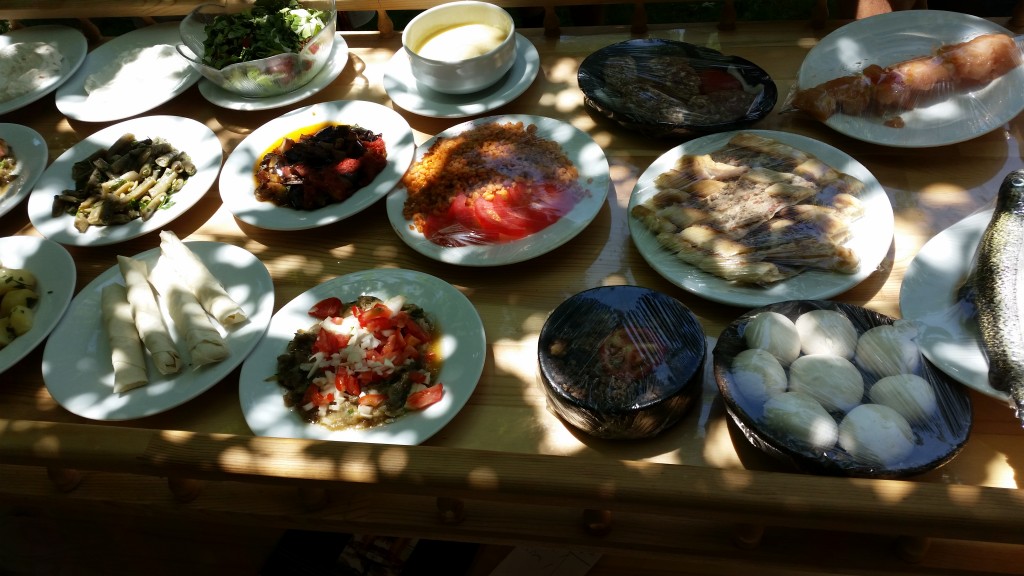
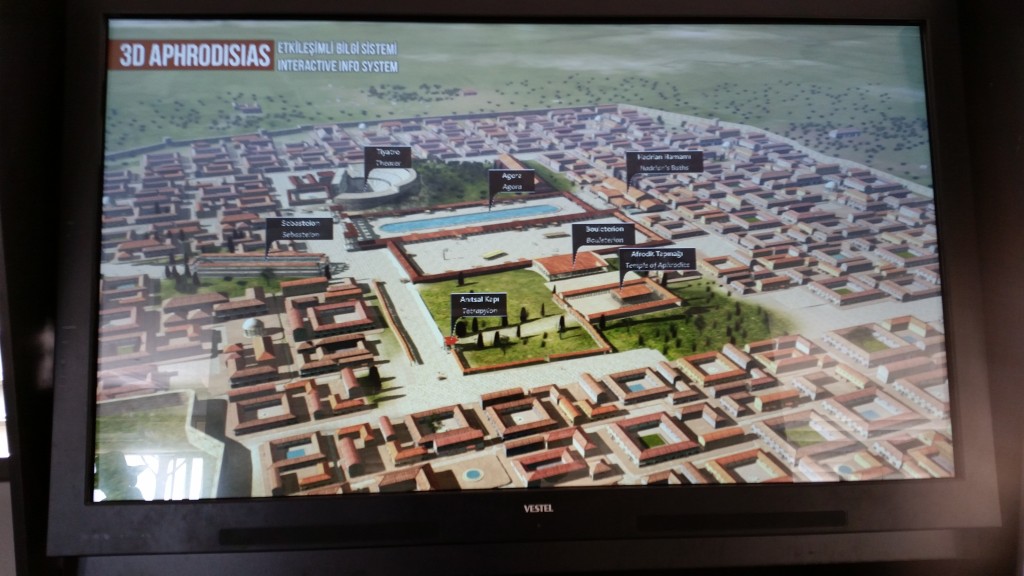
You enter the city of Aphrodisias through the Tetrapylon…. a huge gate.
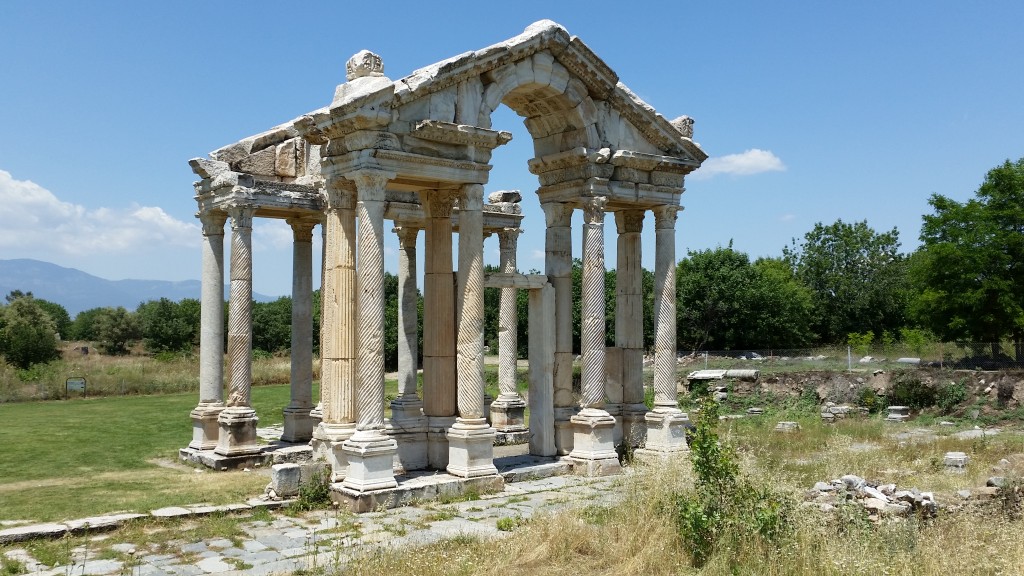
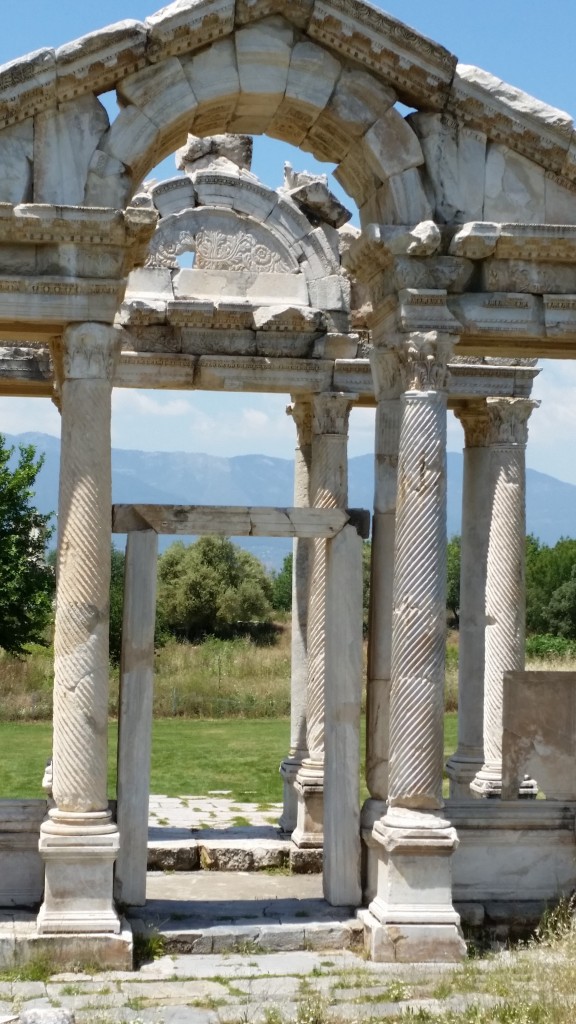
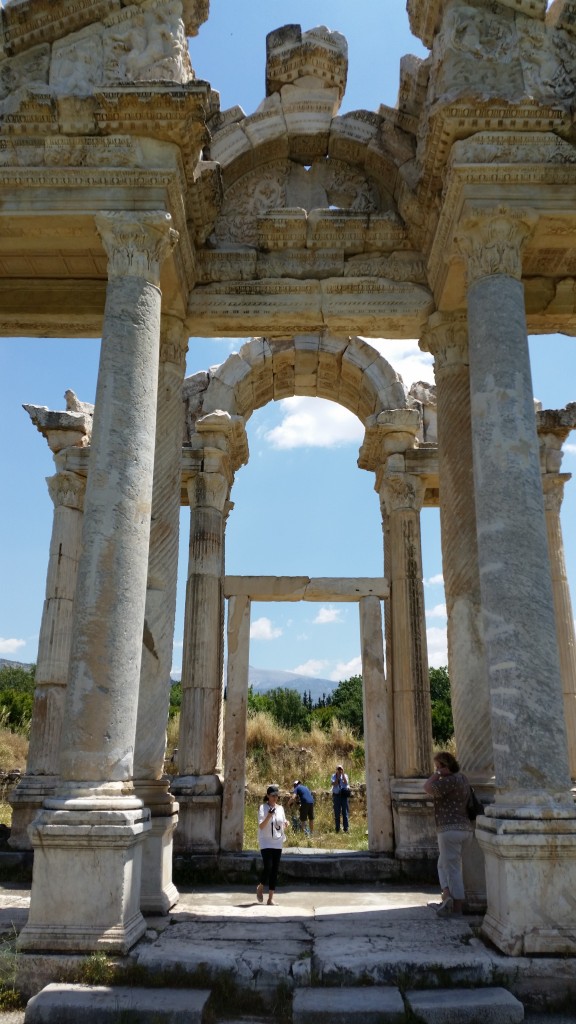
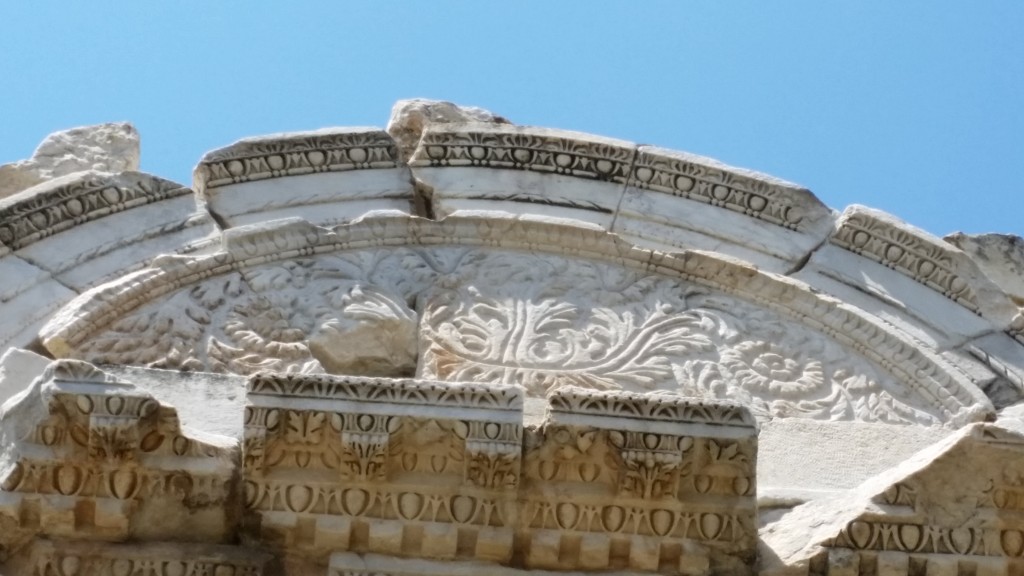
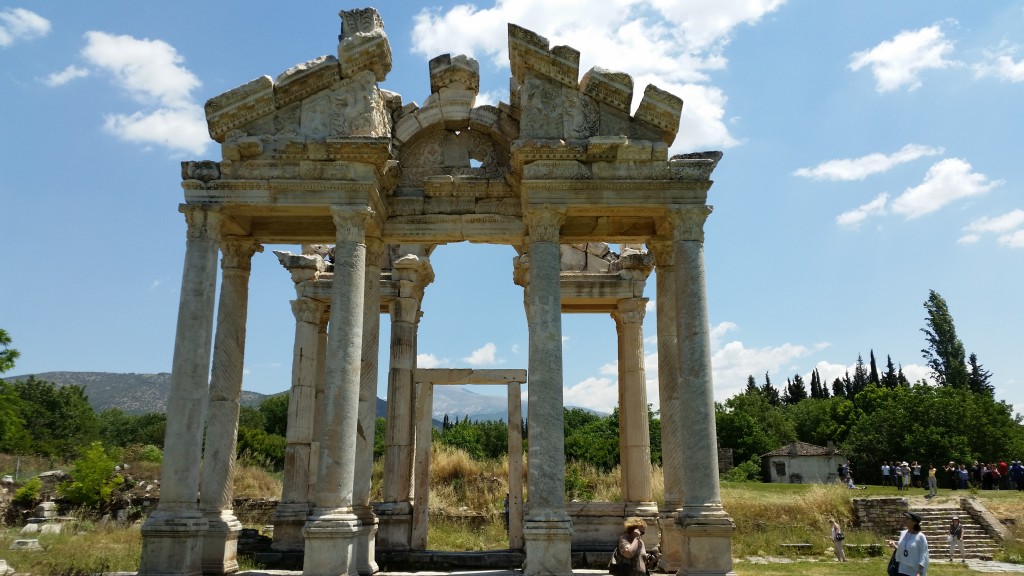
The most recent dig at Aphrodisias is the Sebastion dig,
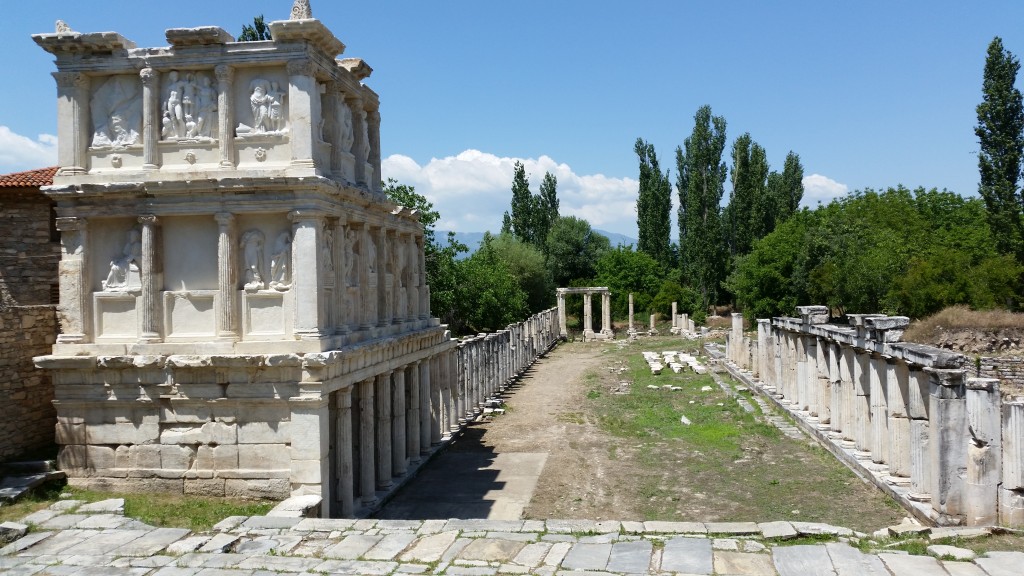
Aphrodisias was an important city for Julius Caesar and the rest of the Julio-Claudian Emperors. They declared it would be the only city in Asia that was directly claimed by the Emperor, and therefore was tax free. In honor of that family, the Sebastion was built, apparently mainly by Claudius and Nero, the last of the Julio-Claudian Emperors. The dig here began in 1979, but much has been done recently, and the statues and reliefs from it are what you see in the back hall of the Aphrodisias museum.
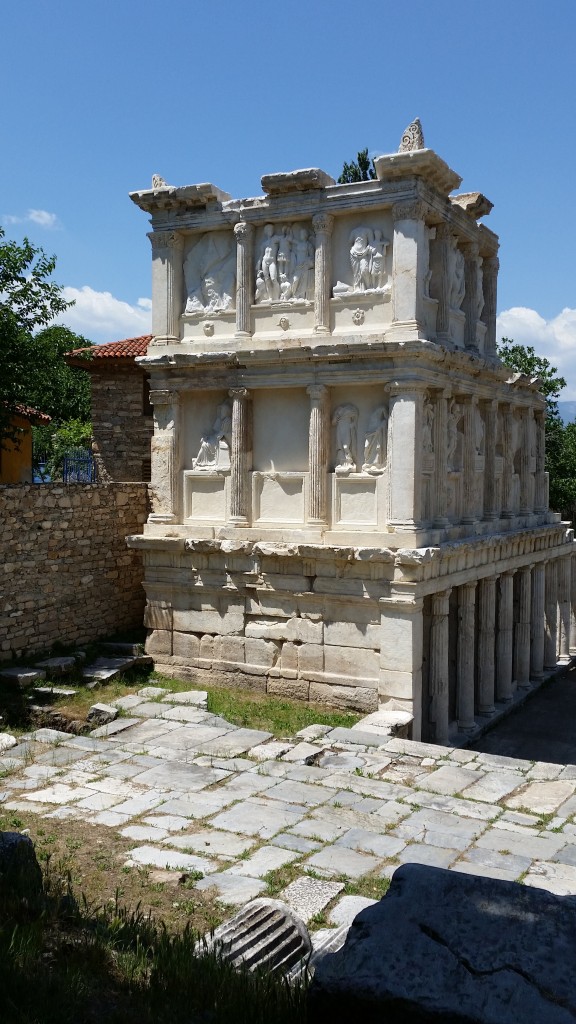
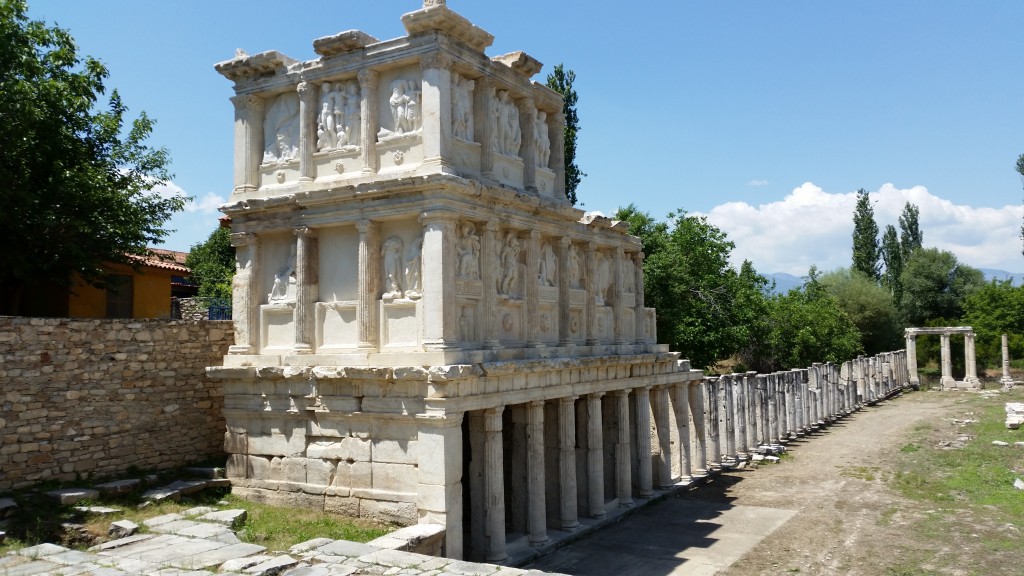
The Sebastion was built by two local wealthy families who knew which side their bread was buttered on. Aphrodisias was famous for its sculpters in marble, and not surprisingly it is very much on display in this city. There are a variety of myths portrayed on this monumental building (e.g. about Prometheus or Herakles/Hercules) but just as importantly, the story of the family of Caesar and his descendents are also depicted, ranking them with gods and demi-gods.
For example, here is Nero….
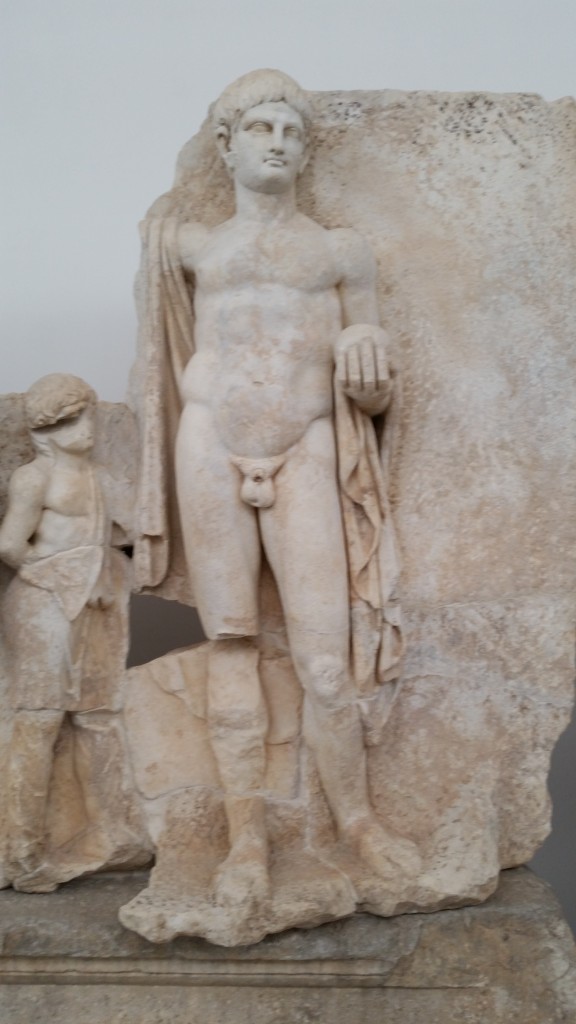
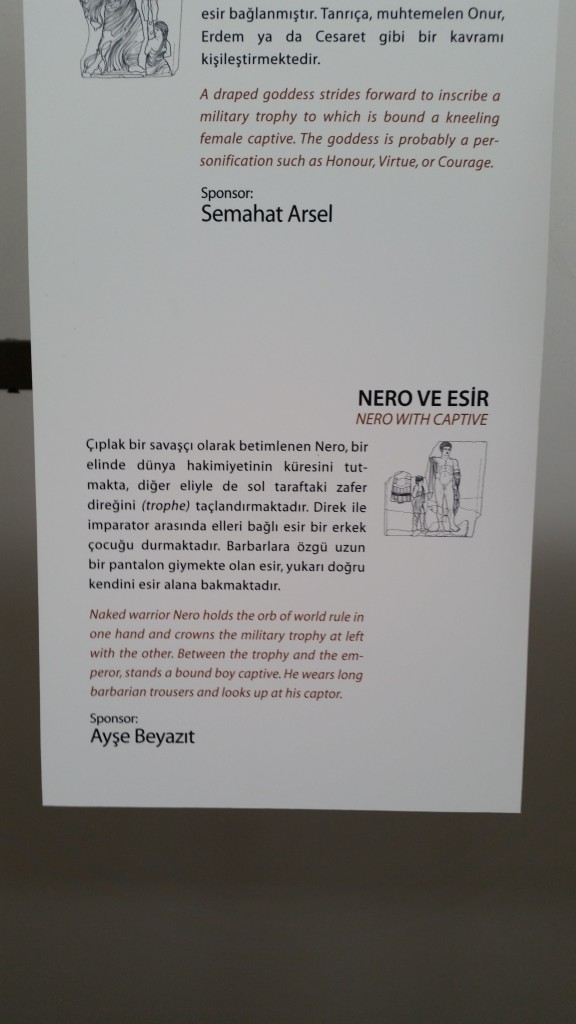
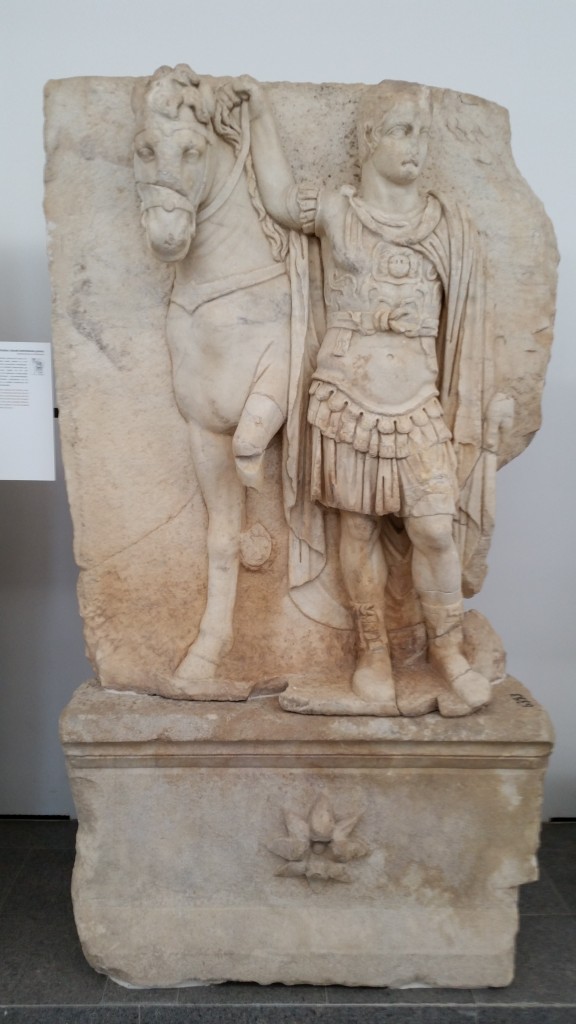
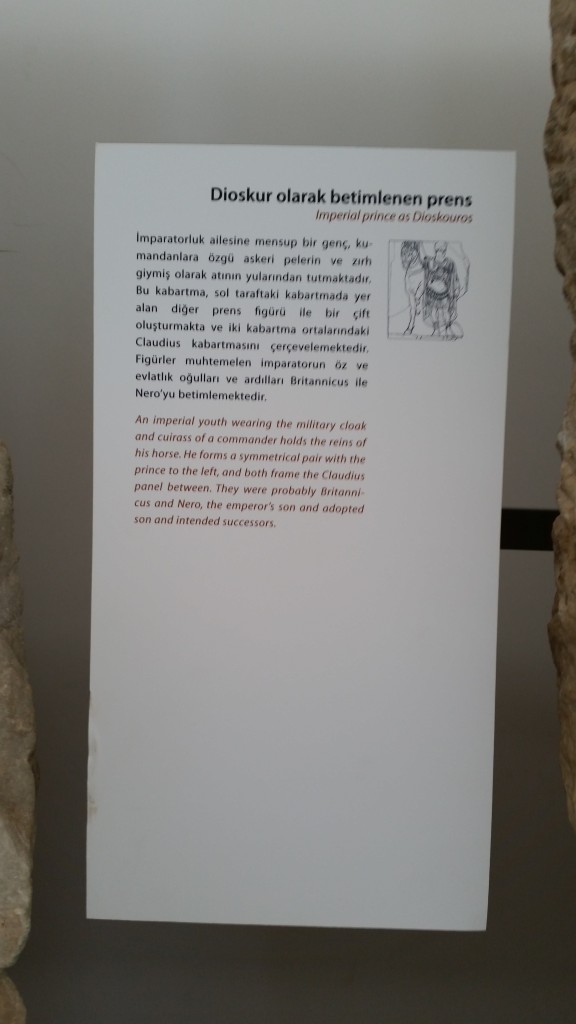
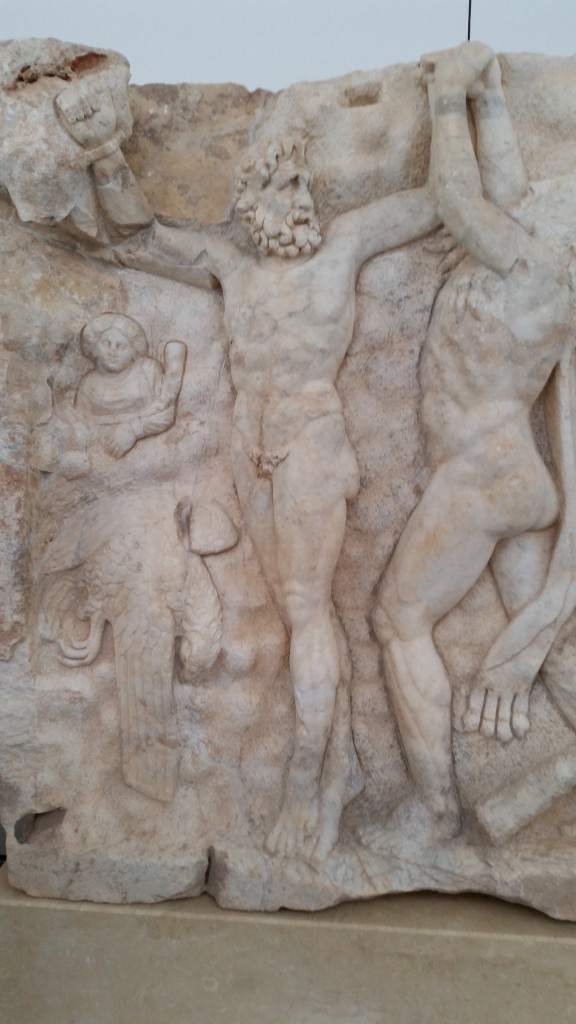
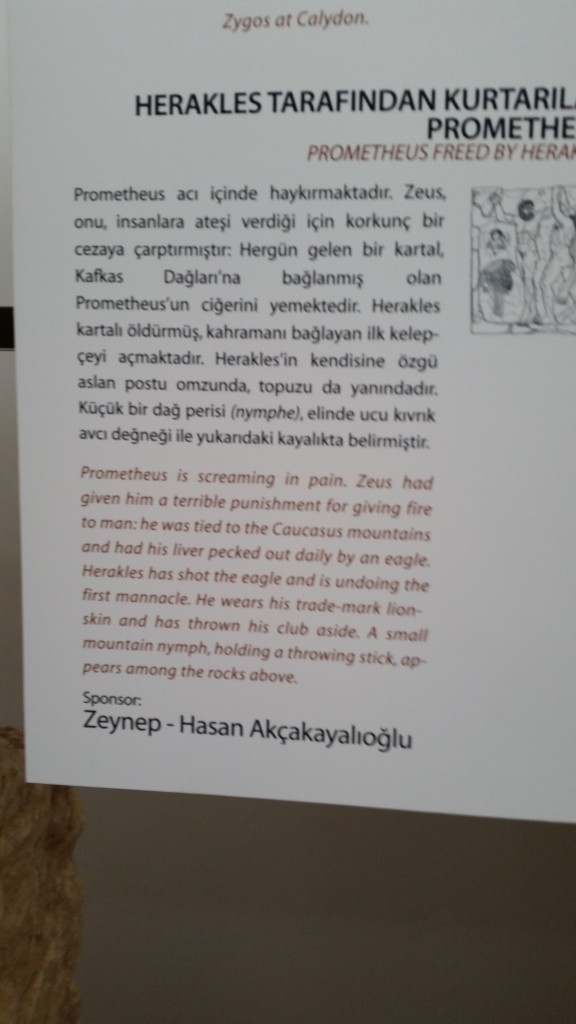
Here are some new signs that help explain or help you visual things.
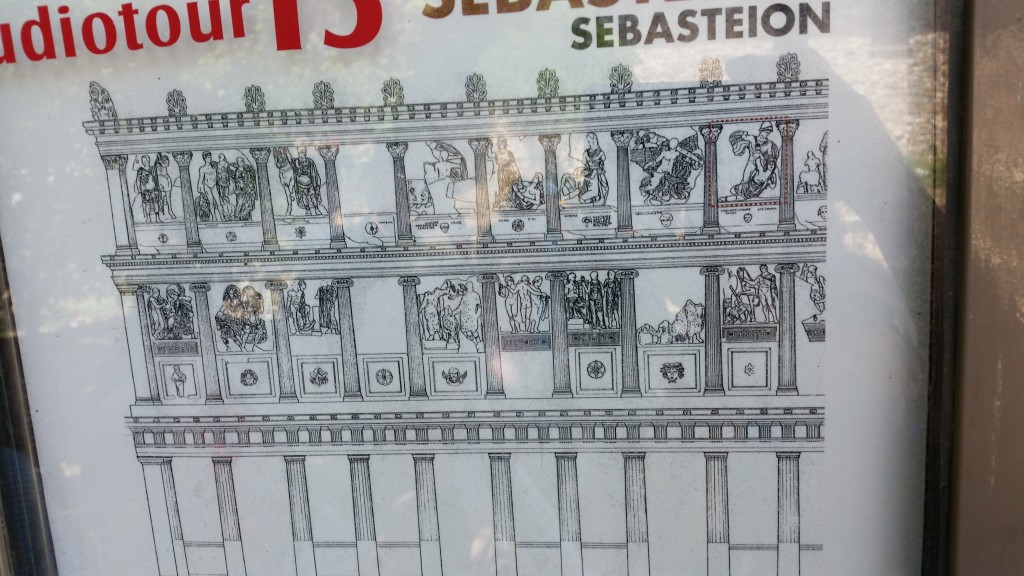
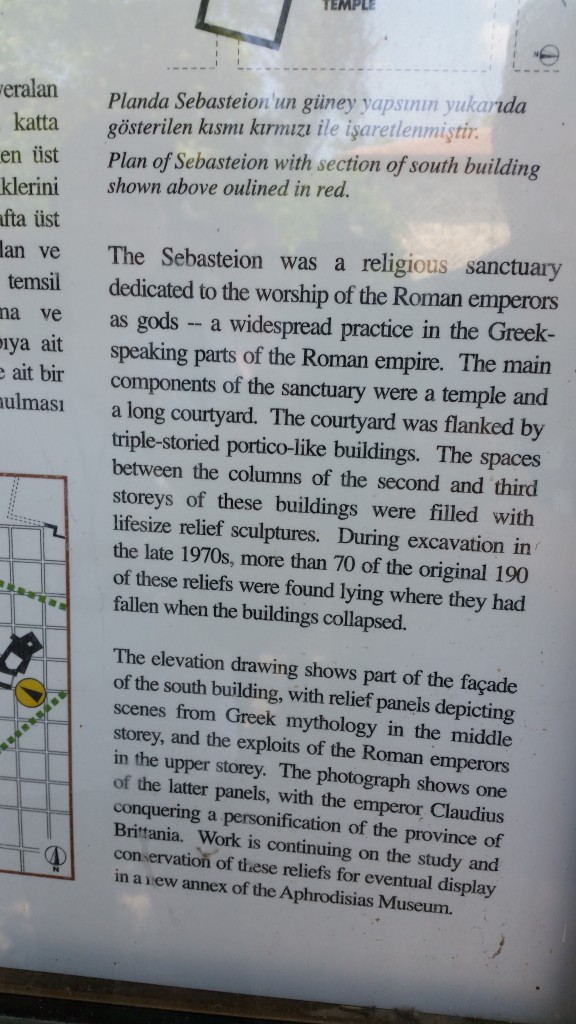
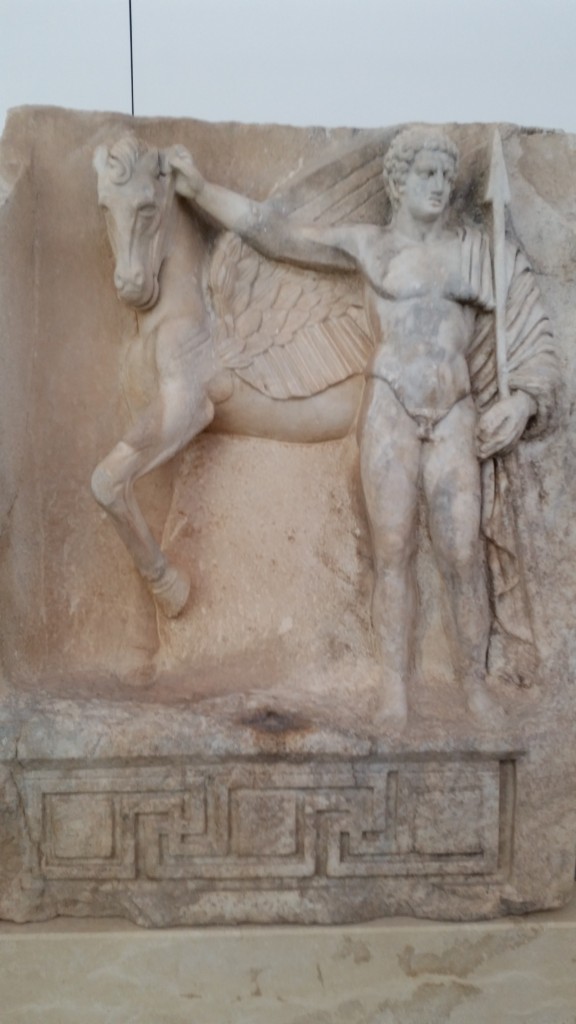
Here’s Pegasus and his winged horse.
Speaking of which, here is a blue marble horse carved here, and found in 1970.
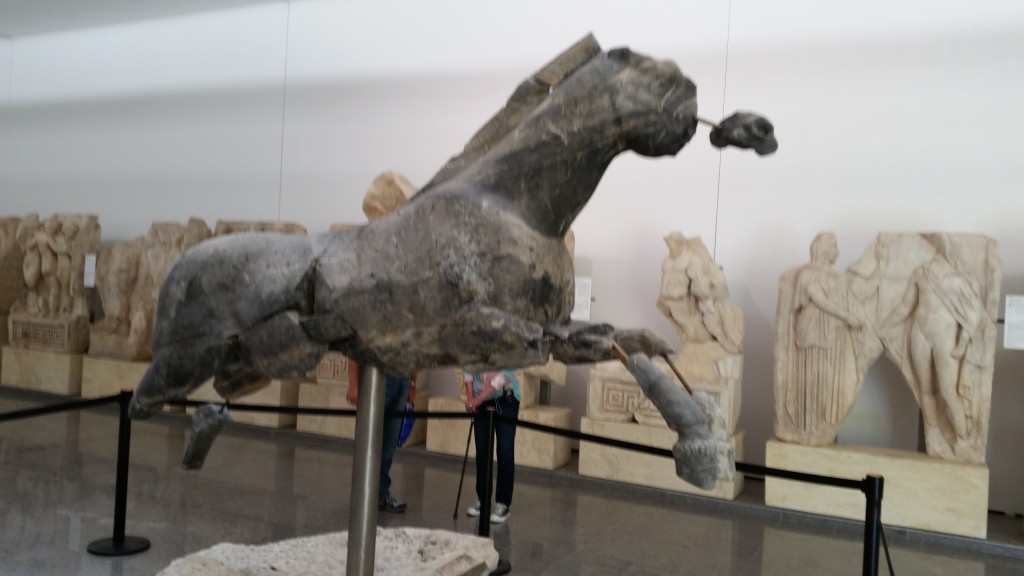
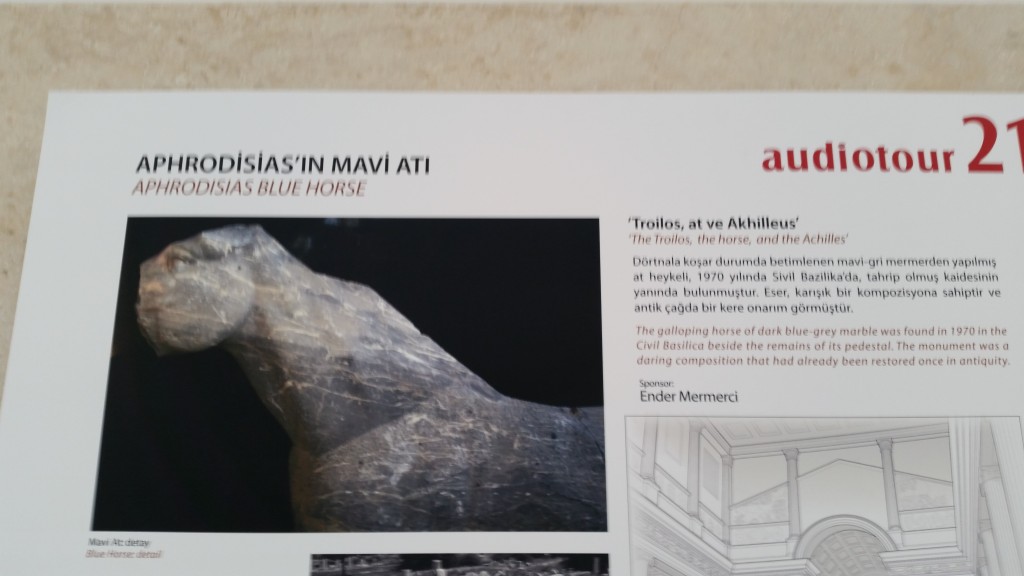
There was plenty of scope for creativity, and plenty of marble in Aphrodisias to be creative at the sculptors school.
